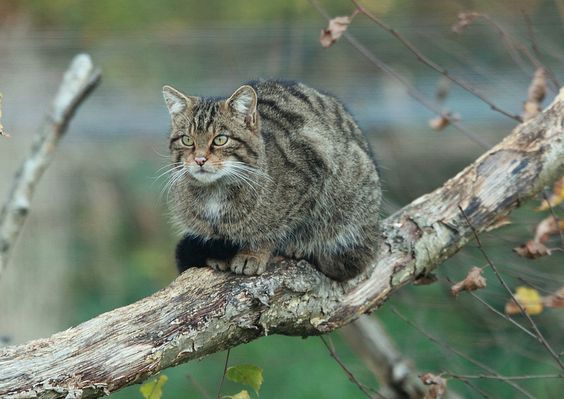Of all the wild mammals of our fauna, the wildcat is perhaps the least known of all, the great forgotten of our forests. There is no known study on the distribution and status of its population in the Iberian Peninsula. Only some autonomous communities, on the occasion of the preparation of an atlas of mammals, have provided recent data, although not very conclusive, on this peculiar species. Its biology is known thanks to specimens in captivity and its tracking by means of transmitter collars after its release. Stealthy, solitary and nocturnal, the wildcat slips into the shadows of the night under the stars to utter a warning cry. From solitude it has passed into oblivion, and from oblivion there is only one step towards extinction.
Among the Quechua Indians of Peru, there persists a belief in a fierce winged mountain cat, called Ccoa, which shoots rays from its luminous eyes. Ccoa, an active and feared spirit, is believed to exert his power over the weather, and thus over the fertility of crops and animals, by roaring like thunder and pissing rain. It is said that there are two kinds of people, those who serve Ccoa, giving him offerings and whose fields are never damaged by frost and hail, and those who are against him, who are often sick and whose fields hardly produce.
Cats have had a profound impact on the human imagination since our species began to take its first steps. Big cats have inspired fear and admiration at the same time; small cats, whether wild or domesticated, have in turn found a place in our superstitions and affections as miniature representatives of the feline spirit.
The domestic cat is believed to have first appeared in Egypt during the New Empire, around 1500 BC. Many experts agree that the earliest varieties of domesticated cats are descended either from the African wild cat (Felis silvestris libyca) or from a cross between it and the jungle cat (Felis chaus), which was produced in temple precincts or in areas inhabited by humans.
The care that the Egyptians lavished on their cats was particularly evident at their death. When a cat died, the household was plunged into a period of mourning and lamentation, including the shaving of the eyebrows. The cat’s body was taken to an embalmer and after being treated with aromatic oils and wrapped in linen, it was covered with an outer bandage of cloth, papier-mâché or a small wooden coffin, depending on what the family could afford. Once this process was completed, the cat mummy was buried in one of the many cemeteries that dotted the banks of the Nile or, perhaps, in the holiest and largest cat cemetery of all, at Bubastis. The number of these animals that received this ceremonial treatment was enormous. In excavations at Beni Hassan in 1989, some 300,000 mummified cats were found.
Egyptian cats lived in temples, where the males were consecrated to the sun god Ra, who preserves the order and harmony of the universe. The females to the fertility goddess Basteta. Despite their sacred character, many were sacrificed. Outside these rituals, anyone who killed a cat was condemned to death.
In Europe during the Middle Ages, the domestic cat was associated with witchcraft, which led to numerous persecutions. It seems that the wild species to which this tribute is dedicated was largely spared persecution, although it gained a persistent reputation for cruelty, as attested to by the works of natural science, which described the wild cat as a truly ferocious beast “capable of killing far more prey than it can devour”…
To continue reading the entire report, click on the following LINK






